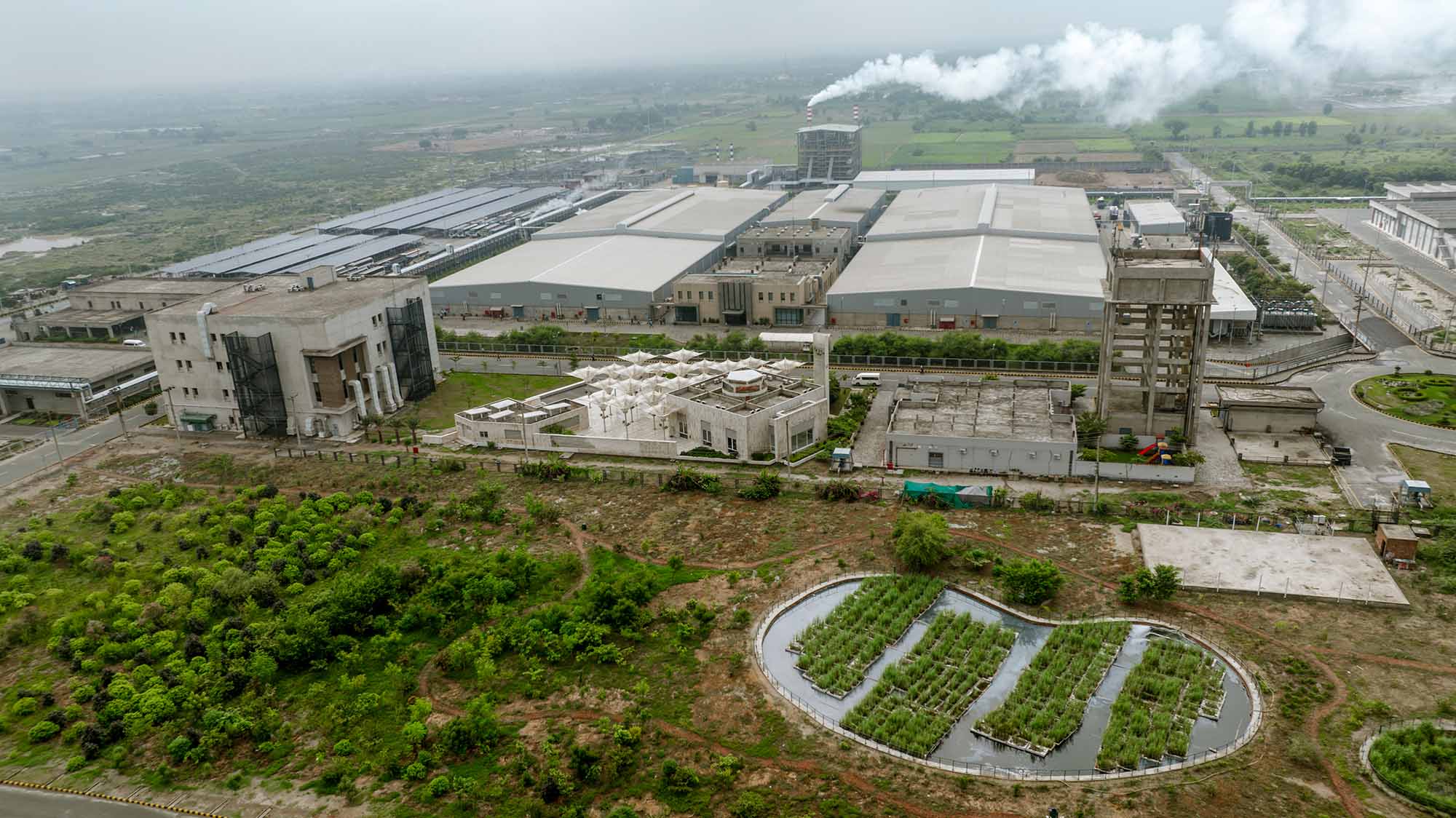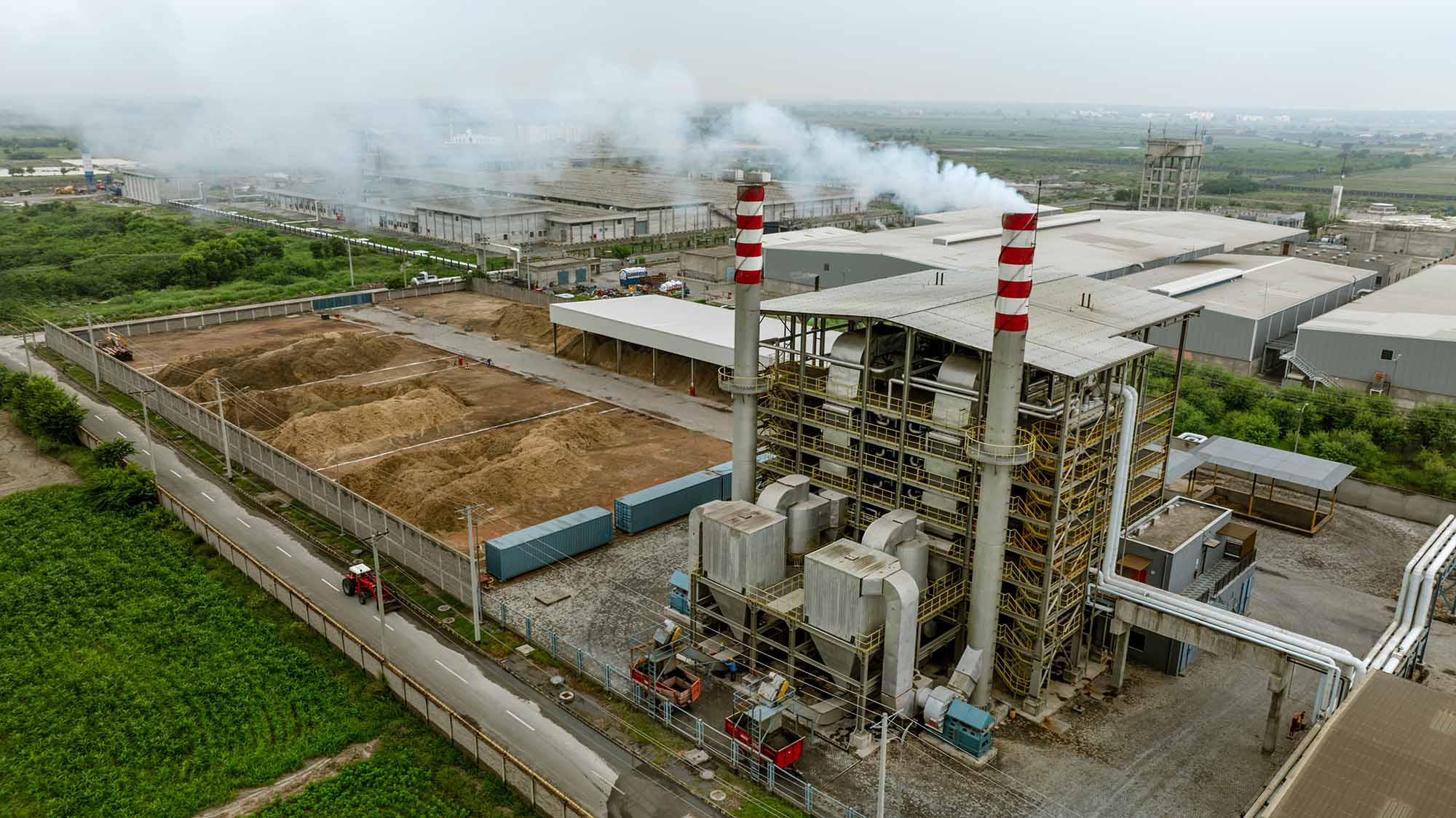
Sponsored by Interloop
As circularity becomes a defining goal for innovators in the global textile industry, Otis Robinson reports on how Pakistan’s Interloop is aligning with worldwide efforts to advance measurable progress in waste reduction, traceability, regenerative sourcing and decarbonisation.
Within the global textile industry, stakeholders face pressures to recognise that the “take-make-dispose” model is incompatible with a planet under strain from climate change, resource scarcity and growing waste. A circular economy – where materials are kept in use, recovered and regenerated – has become the alternative framework for textile sustainability. The Ellen MacArthur Foundation defines it through three principles: eliminate waste and pollution, circulate products and materials, and regenerate nature.
The European Commission’s Strategy for Sustainable and Circular Textiles notes that textiles have the fourth-highest environmental impact of all consumption categories, while just 1% of used textiles are recycled into new garments. In response, regulation is accelerating: a handful of European Union (EU) countries have already introduced extended producer responsibility (EPR) laws, ensuring producers are held accountable for collection, sorting and recycling; the EU itself has introduced ‘landmark’ rules to tackle waste; and annual environmental, social and governance (ESG) reportage has become common around the globe to better understand consumption and impact patterns. These shifts are driving manufacturers and brands to embed circularity across design, sourcing and production, anchoring the industry’s realignment with the UN Sustainable Development Goals (SDGs).
Within this global context, Pakistan’s Interloop – one of the world’s largest hosiery manufacturers and the country’s biggest listed textile company – stands out as an example of how a South Asian hub can join the fight to advance the local and global circularity agenda through measurable progress in waste reduction, traceability, decarbonisation and regenerative agriculture.
Setting an example
Interloop, in conversation with WTiN, says it aims for 100% waste diversion from landfill by 2026 and has already achieved 90% diversion. This progress is built on projects such as converting sock waste into yarn that now supplies half of its hosiery needs, and textile-to-textile recycling partnerships via Reverse Resources. Meanwhile, Apparel Plant adds monthly waste-transfer data to the Reverse Resources portal, ensuring that waste is transparently tracked and fed back into recycling streams. Interloop highlights that these initiatives directly align with the global call to design products for recyclability and to retain materials at their highest value. By operationalising these principles, Interloop demonstrates what circular manufacturing looks like in practice: measurable, traceable and scalable.
Doubly, as traceability becomes a regulatory and market requirement, Interloop seeks to lead the way. The EU plans to make digital product passports (DPPs) mandatory for textiles to improve transparency and enable circular design; remaining ahead of the curve, Interloop’s pilot of a DPP with Socklab® and GS1 Netherlands anticipates this future. Consumers can scan a QR code on Socklab’s fully biodegradable, Cradle-to-Cradle Certified GOLD sock to view verified data on material origins, production and end-of-life instructions. The Pakistani company’s early adoption signals its readiness to meet these evolving demands and to deliver digital traceability at scale, covering not only materials but the ethical and environmental data consumers increasingly expect.
Regenerative sourcing, decarbonisation and material innovation
Elsewhere, Interloop’s Regen Kapas program redefines sustainable cotton cultivation in Pakistan. Expanding beyond certified organic, the initiative applies regenerative farming across 6,000 acres in southern Punjab, engaging 1,000 farmers. The program has increased soil organic matter, reduced water use and lowered farmer costs, which the company says is proof that regenerative systems must be economically viable to scale. Certified under Regenagri, Regen Kapas embodies the circular principle of regenerating nature. The program produced over 1,700 tonnes of traceable cotton lint this season, and adoption by brands such as Hugo Boss shows its commercial traction. For Interloop, it means access to verified, traceable fibre and deeper partnerships with brands investing in regenerative materials, helping reach its goal of 100% sustainable cotton sourcing.
Circularity extends beyond materials to energy, emissions and water; as such, Interloop sources 40% of its energy from renewables, including 17 MW of solar capacity and 55 t/h biomass boilers. Since FY21, emissions have fallen 21%, and within water stewardship, Interloop’s consumption is 20% lower. At Interloop’s Apparel Park, 20% water recycling is already operational and scaling toward 60%, potentially saving 525 million litres annually. These measures echo the Paris Agreement and Alliance for Water Stewardship standards, the company says, placing Interloop firmly within the global decarbonisation and resource-efficiency movement.
“Our year-on-year efficiency gains come from verified data, digital traceability and science-based targets that drive real reductions in emissions, water and waste,” says Faryal Sadiq, chief marketing officer at Interloop. “Nearly half our energy is now renewable and 63% of our materials are sustainable.”
Meanwhile, innovation in circular materials remains a key enabler of change. Interloop’s Loomshake™, an ISCC-certified fibre made from banana agricultural waste, converts an underused by-product into a renewable raw material. Integrated into GUESS collections, it exemplifies how new regenerative materials can move from pilot to mainstream use. Globally, fewer than 1% of textiles are recycled fibre-to-fibre. Innovations like Loomshake help close this gap by diverting waste, reducing dependency on virgin inputs and aligning with international targets for sustainable materials use.
Linking global priorities and regional leadership
In summary, Interloop’s sustainability performance mirrors international circular economy indicators. More than compliance, this represents leadership from a key manufacturing nation in the Global South.
With the EU’s textile strategy requiring all textile products on the EU market by 2030 to be durable, repairable and recyclable, suppliers like Interloop that can verify sustainability data are strategically positioned to meet future sourcing standards. As traceability becomes a prerequisite for trade, Interloop’s Looptrace system – which digitises end-to-end visibility from farm to factory – sets a benchmark for transparency.
Ultimately, Pakistan’s textile industry is increasingly aware of its potential to lead in sustainability, circularity and social responsibility. As Dr Yasir Nawab of Pakistan’s National Textile University told WTiN in 2025: “The goal is to transform Pakistan’s textile ecosystem into a globally competitive, circular and sustainable system that reduces environmental impact while creating economic value.” Interloop exemplifies this ambition: through quantifiable progress in waste management, traceability, renewable energy, regenerative agriculture and circular material innovation, it aligns with the world’s evolving regulatory and environmental priorities. And as global supply chains shift from pilot programs to systemic circularity, Interloop demonstrates that meaningful transformation is not limited to the Global North – by embedding measurable circular practices at every stage, it provides a replicable model for textile producers across emerging economies striving to thrive in a low-carbon, circular future.
For more information, visit www.interloop-pk.com.
Have your say. Join the conversation and follow us on LinkedIn








